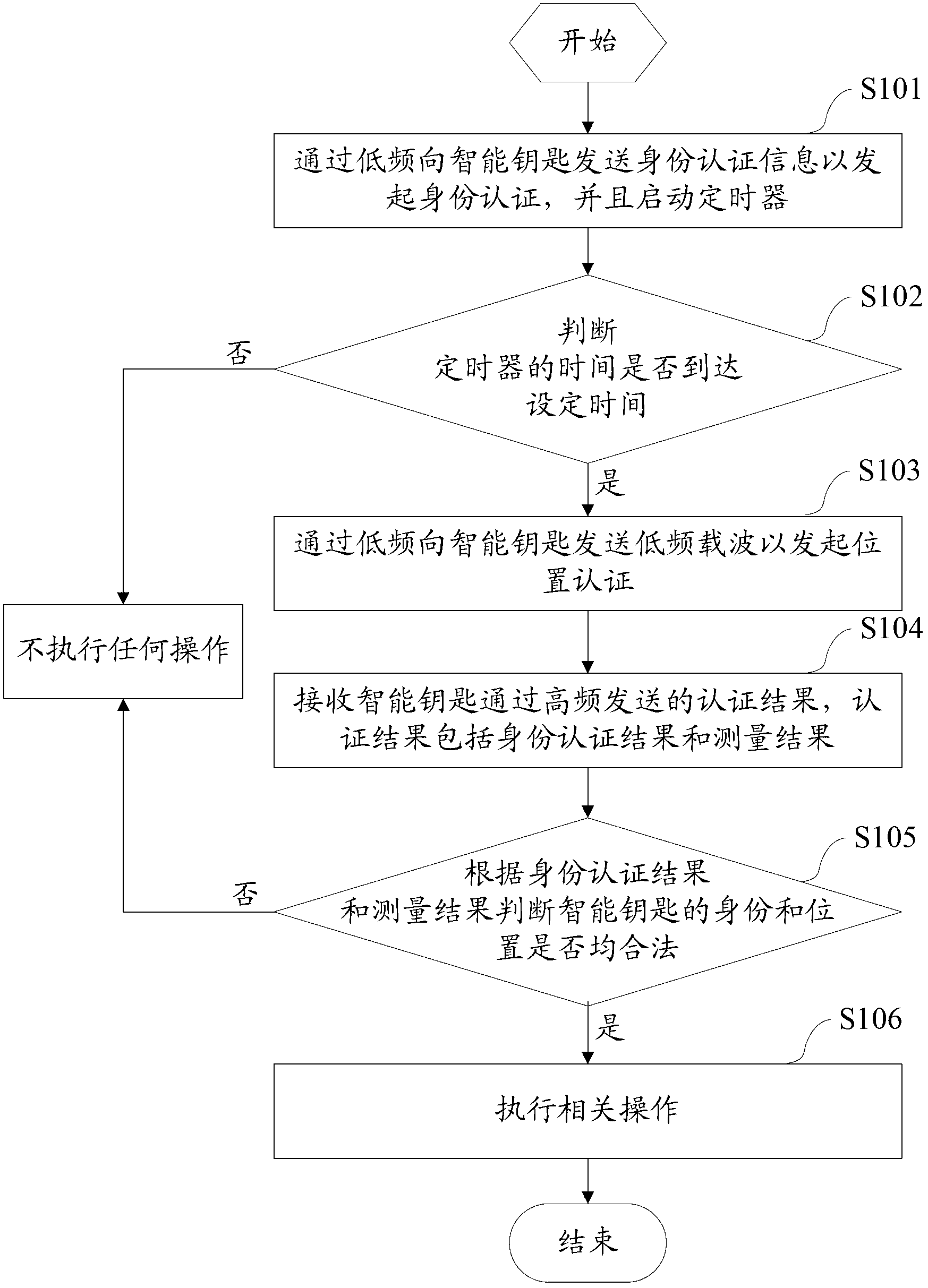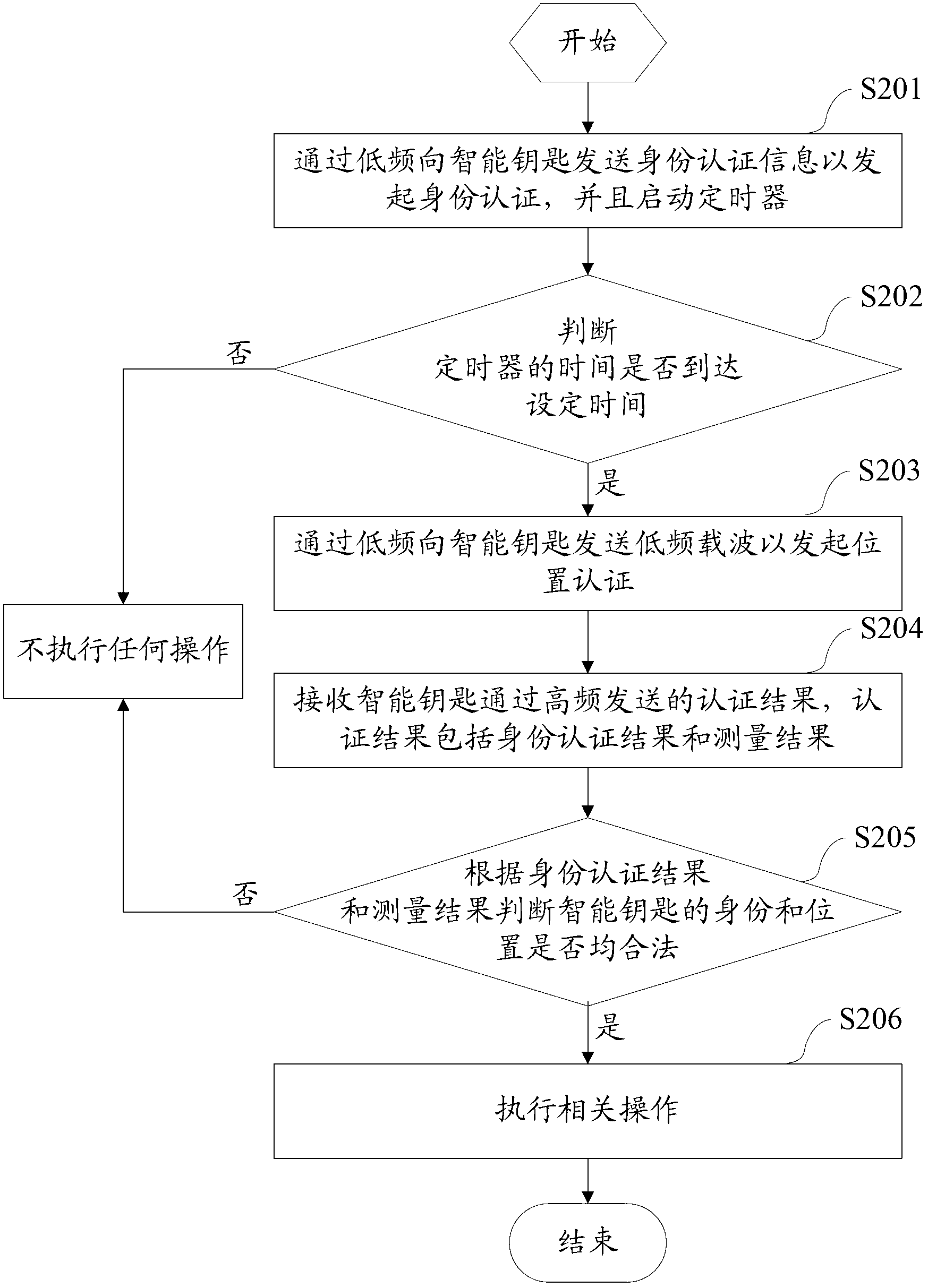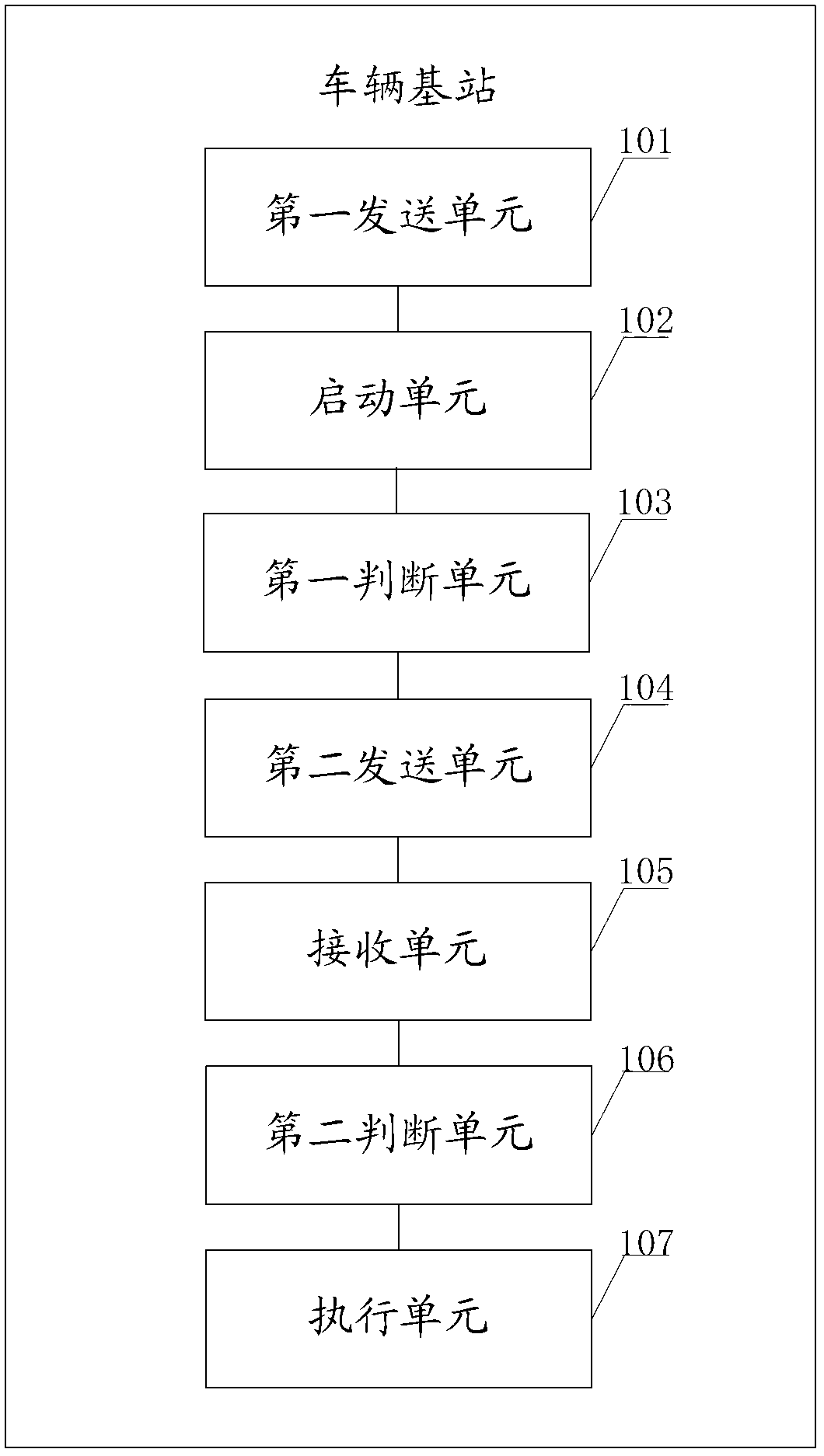KPD (key position detection) authentication method and system for vehicle and smart key and vehicle base station
A technology for smart keys and vehicles, applied in the field of PEPS, can solve problems such as time-consuming, increased instability factors of vehicle base stations and smart keys, and cumbersome KPD authentication process, so as to enhance practicability and reduce the possibility of unstable factors. The effect of successful certification
- Summary
- Abstract
- Description
- Claims
- Application Information
AI Technical Summary
Problems solved by technology
Method used
Image
Examples
Embodiment 1
[0045] Embodiment 1 of the present invention provides a KPD authentication method for a vehicle and a smart key. The vehicle base station corresponding to the smart key is provided with a timer. figure 1 A schematic flow chart of the method is shown, and the method may include:
[0046] S101: Send encrypted coded identity authentication information to the smart key at low frequency, and start a timer.
[0047] S102: Determine whether the time of the timer reaches the set time, and when the time of the timer reaches the set time, go to step S103; otherwise, do not perform any operation.
[0048] S103: Send a low-frequency carrier wave to the smart key through low frequency to initiate position authentication to the smart key.
[0049] S104: Receive the authentication result sent by the smart key through high frequency, wherein the authentication result includes: the identity authentication result obtained by decrypting and decoding the identity authentication information by the ...
Embodiment 2
[0054] Embodiment 2 of the present invention provides a KPD authentication method for a vehicle and a smart key. The vehicle base station corresponding to the smart key is provided with a timer. figure 2 A schematic flow chart of the method is shown, and the method may include:
[0055] S201: Send encrypted coded identity authentication information to the smart key at low frequency, and start a timer.
[0056] Wherein, the identity authentication information sent by the vehicle base station to the smart key through low frequency may include: message header, first data and message trailer. The first data includes: smart key ID, random array, first ciphertext and CRC check byte. The first ciphertext is generated by the vehicle base station by encrypting the original data with the first encryption algorithm, wherein the original data includes: smart key ID, smart key key SK, random array and password.
[0057] S202: Determine whether the time of the timer reaches the set time,...
Embodiment 3
[0070] Embodiment 3 of the present invention provides a vehicle base station, the vehicle base station is provided with a timer, image 3 It shows a schematic structural diagram of the vehicle base station, which may include: a first sending unit 101, a starting unit 102, a first judging unit 103, a second sending unit 104, a receiving unit 105, a second judging unit 106 and an execution unit 107. in:
[0071] The first sending unit 101 is configured to send encrypted and coded identity authentication information to the smart key at a low frequency to initiate identity authentication.
[0072] The starting unit 102 is configured to start the timer when the first sending unit 101 sends identity authentication information to the smart key.
[0073] The first judging unit 103 is configured to judge whether the time of the timer reaches the set time.
[0074] The second sending unit 104 is configured to send a low-frequency carrier wave to the smart key at a low frequency to in...
PUM
 Login to View More
Login to View More Abstract
Description
Claims
Application Information
 Login to View More
Login to View More - R&D
- Intellectual Property
- Life Sciences
- Materials
- Tech Scout
- Unparalleled Data Quality
- Higher Quality Content
- 60% Fewer Hallucinations
Browse by: Latest US Patents, China's latest patents, Technical Efficacy Thesaurus, Application Domain, Technology Topic, Popular Technical Reports.
© 2025 PatSnap. All rights reserved.Legal|Privacy policy|Modern Slavery Act Transparency Statement|Sitemap|About US| Contact US: help@patsnap.com



